Ships from China for the Russian fleet
To date, only four Russian Navy ships are capable of providing tactical (zone) air defense squadron in open sea areas. Their names are well known to you: the heavy nuclear missile cruiser Peter the Great and the three missile cruisers of the 1164 project - Moscow, Varyag and Marshal Ustinov.
The remaining anti-submarine, patrol and landing ships of the Navy, despite the presence of a wide range of anti-aircraft weapons - from the maritime defense systems "Dagger", "Hurricane" and "Osa-MA" to the deadly automatic anti-aircraft guns AK-630, can only provide air defense in the near zone in the interests of their own self-defense. In fact, the capabilities of their anti-aircraft weapons are reduced to the fight against the launched cruise missiles and the guided bombs of the enemy — they are no longer able to “get” the carriers.
For an unbiased comparison: in the US Navy are 84 missile cruisers and destroyers, armed with long-range SAMs. The Standard family missiles are capable of shooting down air targets at a distance of hundreds of kilometers, and the height of the newest Stand-3 is not limited at all to the limits of the earth’s atmosphere - American naval air defense missile systems are propelled to the missile defense range.
The current unsightly situation is a natural result of the many years of crisis in the domestic military shipbuilding. Three of the four existing cruisers with long-range air defense systems went to the Russian Navy from the Soviet Union. At one time, the USSR was so cool that he allowed himself to build ships of the same class on several projects at once - as a result, similar ships appeared, but with different, highly specialized functions: BOD (anti-submarine cruisers and destroyers), missile-artillery destroyers, missile cruisers with by the poetic name “grin of socialism” ... In accordance with this concept, heavy and bulky long-range air defense systems were installed exclusively on large missile cruisers, of which they managed to build quite a bit.
As a result, we have what we have: four missile cruisers equipped with the S-300F “Reef” air defense missile system. Three more "Orlan" are in sludge and, at best, can be returned to service no earlier than the end of this decade. A prospective super-helicopter carrier of the Mistral-a la-rus type will not be able to rejoice in terms of air defense: only self-defense systems are on board (according to the latest data, it is planned to arm the ship with the Gibka short-range anti-aircraft complex based on Igla air defense missile systems).
A situation where one opponent has a shield, and another has a sword - sooner or later leads to defeat of the defending side. Automatic anti-aircraft guns and short-range missiles are only the last line of the air defense of the ship. It is much more important to try to destroy the enemy aircraft before it launches cruise missiles. As soon as the Firetails “Harpoons”, HARMs, “Exosets” fall from the attacking bomber's suspension nodes, the task of repelling the attack will turn into a complex system of equations with many unknowns. And every second the chance to save the ship is rapidly approaching zero - the means of the ship’s self-defense are unlikely to repel such a massive rocket attack.
Zonal air defense squadron - a mandatory attribute of modern warfare at sea. Those who dare to enter the zone of military operations without a zonal air defense system will face the gloomy prospects of the Tsushima pogrom. Delivery of military aid to the allies, prevention of provocations, escorting ships in areas of military conflicts - it is much safer and more pleasant to carry out all these operations under the cover of a powerful air defense system with C-300 characteristics, and even better C-400. The Russian Navy is faced with an acute problem of speeding up its saturation with ships capable of providing zonal air defense of a squadron with sufficient efficiency. But what should this ship be?
It is obvious that at the moment Russia is not in a position to massively build the nuclear-powered cruisers Orlan or analogs of Aegis-destroyers like the Orly Burk. Extremely complex and expensive "toys", the creation of which requires outstanding progress in all related fields: engine building, electronics, electrical engineering, precision engineering, physics of composites, etc.
The experience of Great Britain is also hardly applicable to modern Russian realities: the world's best destroyers of the Deering type are excessively expensive and difficult for mass construction, Her Majesty’s fleet was limited to buying only six ships at a price of 1,5 billion pounds each!
In my opinion, the best option for the Russian Navy could be the construction of a modest warship, the size of a large frigate or a small destroyer. Simple, relatively cheap, with the maximum possible use of all known, already "run-in" technologies. Do not fall into the "technological glamor" and try to create a super-destroyer - the situation clearly does not have to such bold excesses. Let's leave fantasies about nuclear power plants on the conscience of irreparable romantics. We will abandon the complex and, as yet insufficiently finished, missile systems and vertical launchers of the UBCS. Down with any talk about the over-versatility of the ship. Remember, we need the most simple and effective ships with zone air defense systems, for the speedy saturation of the Navy of Russia with them.
But what does such a ship look like? What are its real characteristics and capabilities?
The answer will tell us China.
Type 051 “Liuzhou” - modern squadron destroyers of the Navy of the People's Republic of China. Two ships of this type — Shenyang and Shijiazhuang — replenished the fleet composition of the fleet in 2006 and 2007, becoming the next stage in the development of Chinese military shipbuilding. The total displacement of each is within 7000 tons. Boiler-turbine power plant. Full stroke - about 30 nodes.
Why, of all the many Chinese destroyers, was chosen far from the newest Type 051С “Liuzhou”, and not much more technically interesting destroyer Type 052С “Liuyang”? Or is the formidable Type 052D under construction - a symbiosis of all the latest technologies and global trends in military shipbuilding?
The answer is simple, and to some extent, shocking - constructively the destroyer Type 051С is very close to the traditions of our domestic shipbuilding. In the design of the destroyer there is not a single element that the Russian industry would not be able to - the armament and radio-electronic systems are export samples of Russian weapons. Even in external forms, Type 051С slippage features of Soviet BOD and destroyers, the bow with a noble line of the forecastle with the head gives out the Soviet BOD of the 1155 project “Delete”, and the boiler-turbine installation may indicate affinity with the 956 “Sarych” missile-artillery destroyer of the 051 project ( four ships of this type fell into the hands of the Chinese just shortly before the start of the design Type XNUMXC).
This is one design school and, admittedly, the Chinese turned out to be extremely capable and talented students.
Our eastern friends were able to install in the body of a small 7000-ton destroyer ... 48 long-range 48H6 anti-aircraft missiles (C-300 family) in under deck launchers of a drum type. Structurally, the ZRK of the Chinese destroyer is identical to the C-300FM Fort complex, installed on the nuclear-powered cruiser Peter the Great. As on the Russian ship, the destroyer Type 051С uses 48H6 missiles with semi-active guidance. The maximum firing range is 150 km. Altitude range: 10 meters - 27 kilometers. Anti-aircraft missile speed - up to 8 sound speeds!

As a result, the small ship received solid capabilities for controlling the airspace - 48 missiles (half of the anti-aircraft ammunition of the Russian nuclear cruiser!) With equally sophisticated firing control systems: a multipurpose radar antenna with a phased active array (PAR) with electronic beam stabilization ФХNUMXМ, also identical to the one installed on Peter the Great.
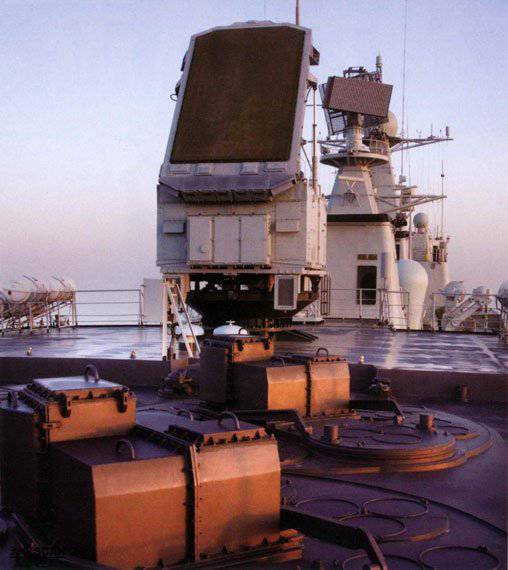
The Russian C-300FM is the basis of the armament Type 051C, it is in this complex that the meaning of the existence of a Chinese destroyer lies. Understanding how great the air defense capabilities of the new ship are and what the main tasks of Type 051С will be, the Chinese honestly classified the “Liuzhou” into a “destroyer of air defense”. Cool ship!
However, the Type 051C has a moderate versatility: in addition to anti-aircraft missiles, there is an entire arsenal of anti-ship weapons on board the destroyer. Eight C-803 cruise missiles - solid-state anti-ship ammunition with a starting mass of one ton (depending on the modification). According to official Chinese data, the firing range can reach 300 km, while the subsonic rocket accelerates at the end of the trajectory to the speed of 2M, while the RCC rushes over the water itself at an altitude of 5 meters. The missile is equipped with a semi-armored warhead mass 165 kg.
By the way, the Chinese have extensive experience in the development and modernization of anti-ship cruise missiles - the aforementioned C-803 is based on the C-802 subsonic Chinese anti-ship missile system, adopted in service with 9 countries of the world.
Also, on board the destroyer Type 051С there is:
- artillery system caliber 100 mm. It is a clone of the French naval gun 100 mm. Universal weapon for firing air, surface and coastal targets. The small high-explosive action of the projectile is to some extent offset by high rate of fire - up to 80 shots / min.
- Two seven-barreled anti-aircraft guns Type 730 caliber 30 mm. According to its characteristics and appearance, it is a clone of the Goalkeeper anti-aircraft artillery complex (Netherlands). Well, the Chinese have once again shown prudence by copying one of the world's best shipboard self-defense systems. The Dutch Goalkeeper is an accurate and effective weapon with huge ammunition power - the artillery part of the complex is nothing more than a seven-barreled aviation the gun of the American attack aircraft A-10 Thunderbolt.
- anti-submarine armament - two three-tube torpedo tubes for shooting 324 mm torpedoes Yu-7. Something very familiar ... for sure, this is just a clone of the American system Mk.32 ASW and 324 mm anti-submarine torpedoes Mk.46. It is considered an effective weapon for PLO in the near zone. Americans themselves doubt that the small torpedo Mk.46 is powerful enough to seriously damage a modern nuclear-powered icebreaker. The combat unit - "just" 45 kilograms.
- Aviation armament destroyer Type 051C. And here is the disappointment! (mixed with relief - at least somewhere the Chinese have slack)
Aft Type 051C has a small platform for the Ka-28 anti-submarine helicopter (an export version of the Ka-27 Soviet naval helicopter). Surely on board there is a stock of aviation kerosene and a certain amount of aviation ammunition. But the main thing is that there is no helicopter hangar on the destroyer, i.e. the permanent basing of the helicopter is not provided.
Unforgivable mistake for the ship of the XXI century! Still, the helicopter is a useful system, greatly expanding anti-submarine, search and rescue, special capabilities of the ship. However, the first destroyers of the Orly Burk type also did not have helicopter hangars ...
After reviewing the Chinese destroyer Type 051C Liuzhou, it can be concluded that the presence of a dozen of such ships in the Russian Navy could significantly increase the combat potential of the surface component of the domestic fleet.
The capabilities of the Chinese destroyer in detecting and destroying air targets practically correspond to the heavy nuclear cruiser Peter the Great and significantly exceed the capabilities of the anti-aircraft defense of the missile cruiser Moskva ...
The Chinese C-803 anti-ship missiles are still a “dark horse.” According to the declared TTH - worthy representatives of the RCC class. What they are in reality is unknown. But the main thing is that 8 launchers in the middle part of the ship give every reason to believe that there would be enough space on the Russian counterpart of the Chinese destroyer to accommodate launch containers with Russian Kiber-class cruise missiles or, alternatively, X-55 Uranus anti-ship missiles .
Nose artillery installation is a matter of taste. You can save the original 100 mm option. And it is better to replace it with the Russian automated AK-192 artillery system of 130 mm caliber.
Anti-aircraft guns - there are excellent Russian development "Dirk" and "Palash" - anti-aircraft melee missiles significantly enhance the air defense potential of the ship.
Anti-submarine weapons - the domestic Medvedka small-sized missile system with 324 mm homing torpedo as a warhead. The maximum firing range is 20 km. Not a bad result.
In the end, no one calls for a complete copy of the Chinese destroyer - are we really not able to construct our own ship of this level? Taking into account all your own wishes and needs.
Main power plant? Her type doesn't matter. The Chinese use the good old boilers for fuel oil. You can install gas turbines. You can try a combined diesel-gas turbine unit type CODAG. What will be cheaper, easier and more profitable. The main thing is not a nuclear reactor - otherwise the whole idea of a simple and effective “budget” destroyer “will be covered with a copper basin”. But how will the ships of the Northern Fleet go to Nagasaki without a nuclear reactor? I answer: the ships of the Northern Fleet will not go to Nagasaki. Pacific Fleet ships will sail to Nagasaki. After all, all the simplifications in the design of the destroyer serve the sole purpose - as quickly as possible to saturate the naval personnel of the Russian Navy with new ships with a solid combat potential.
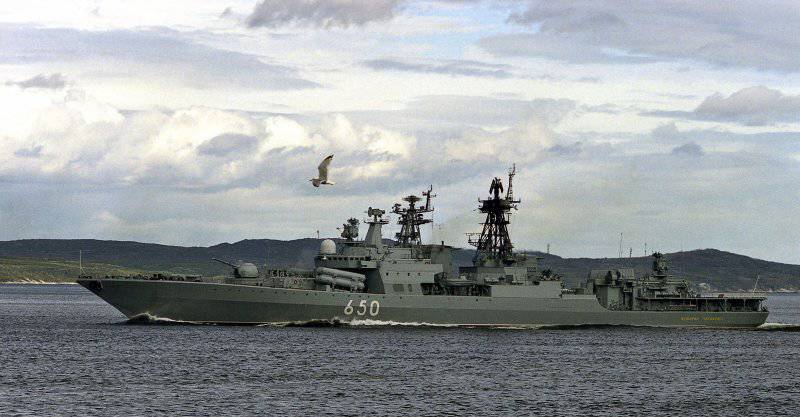
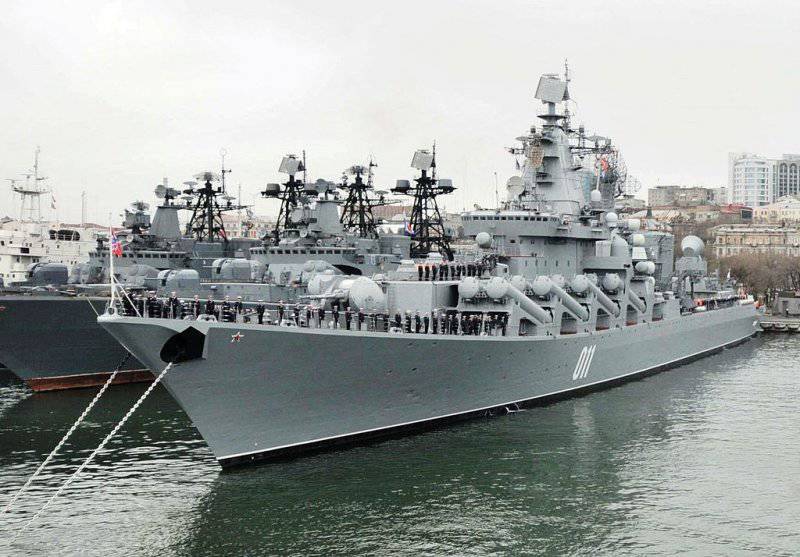
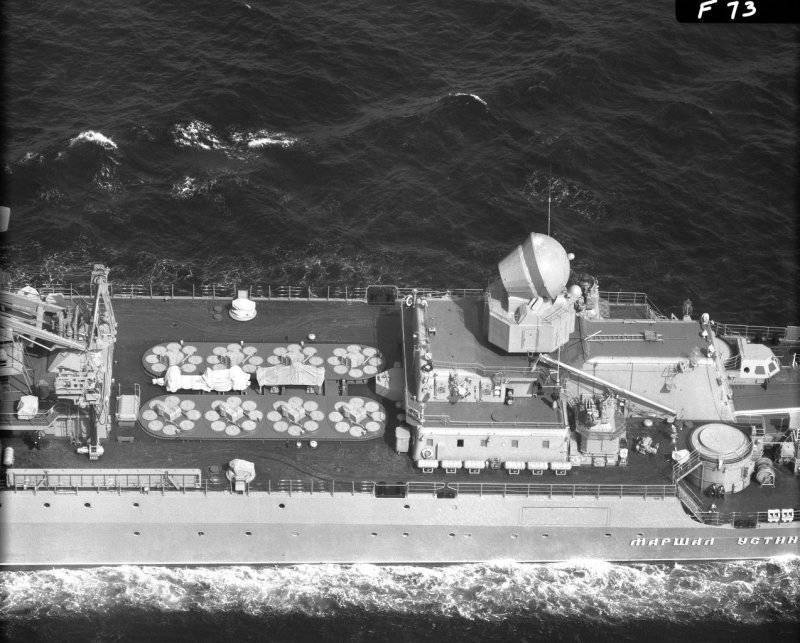
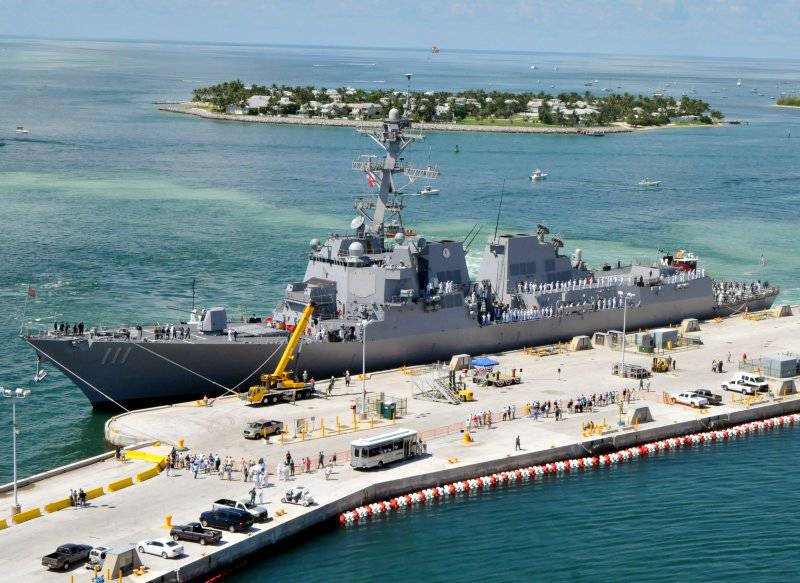
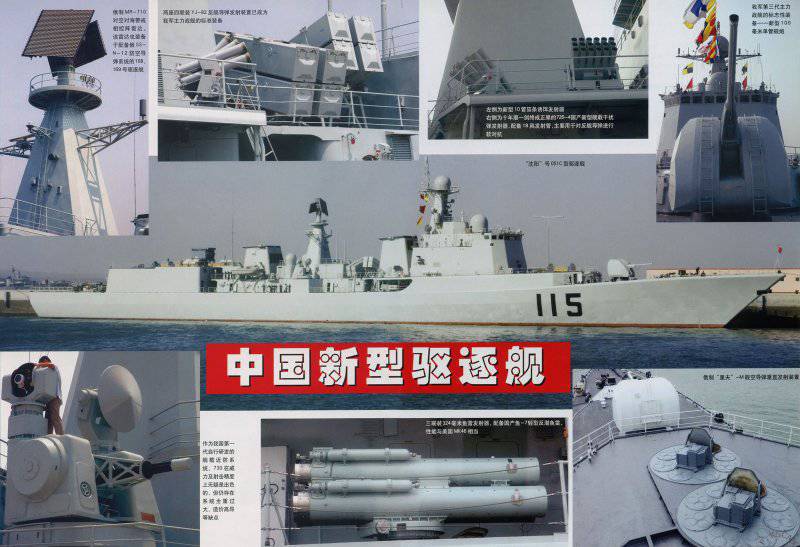
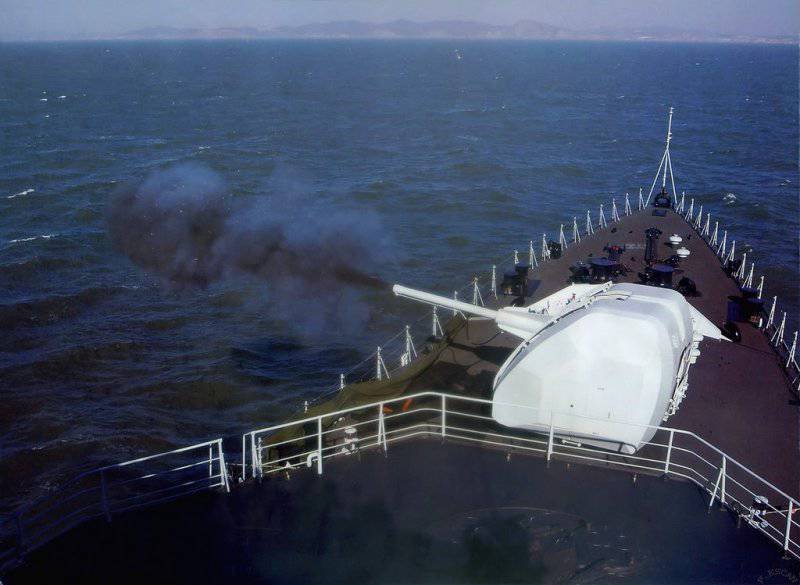
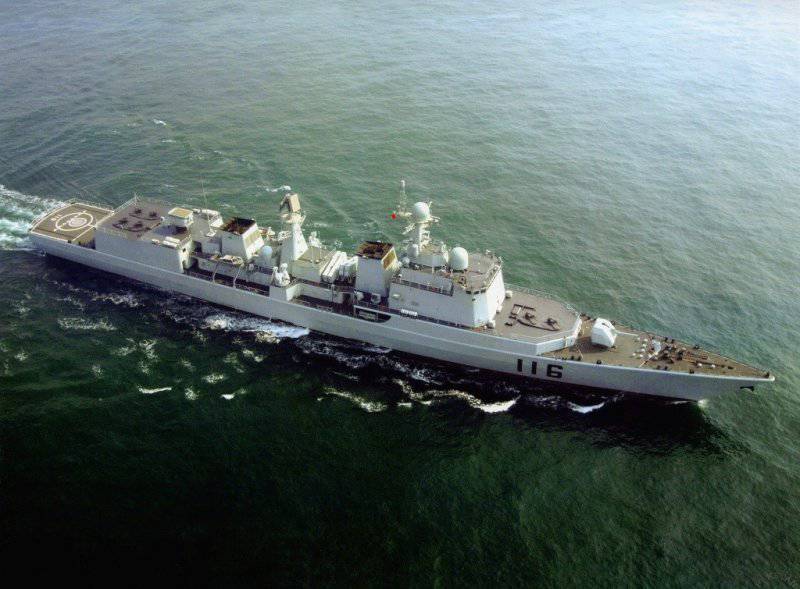
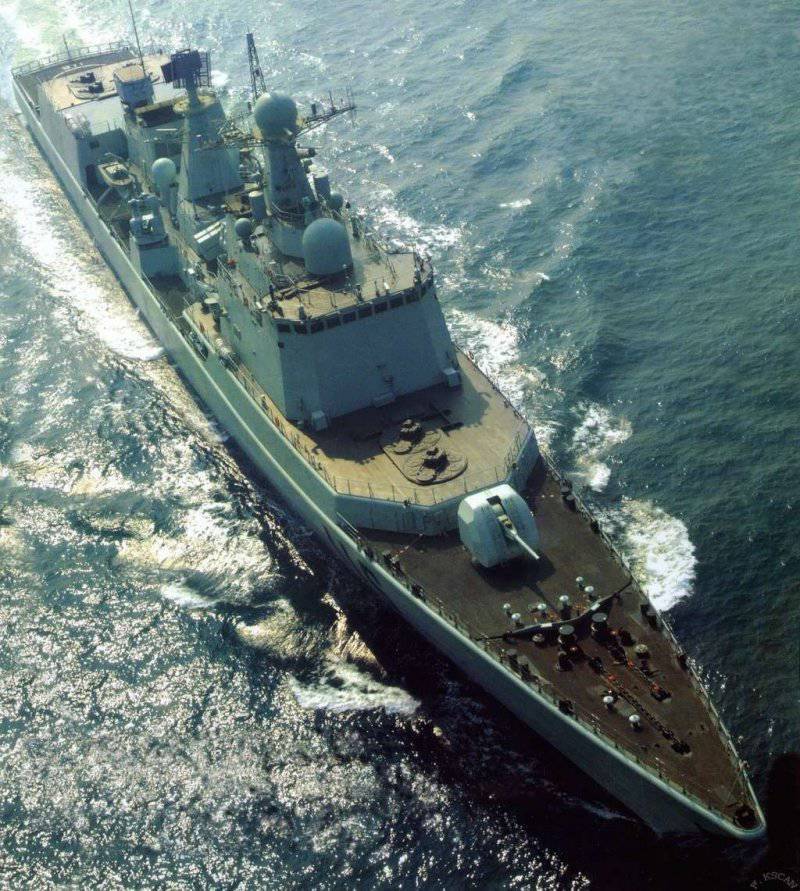
Information